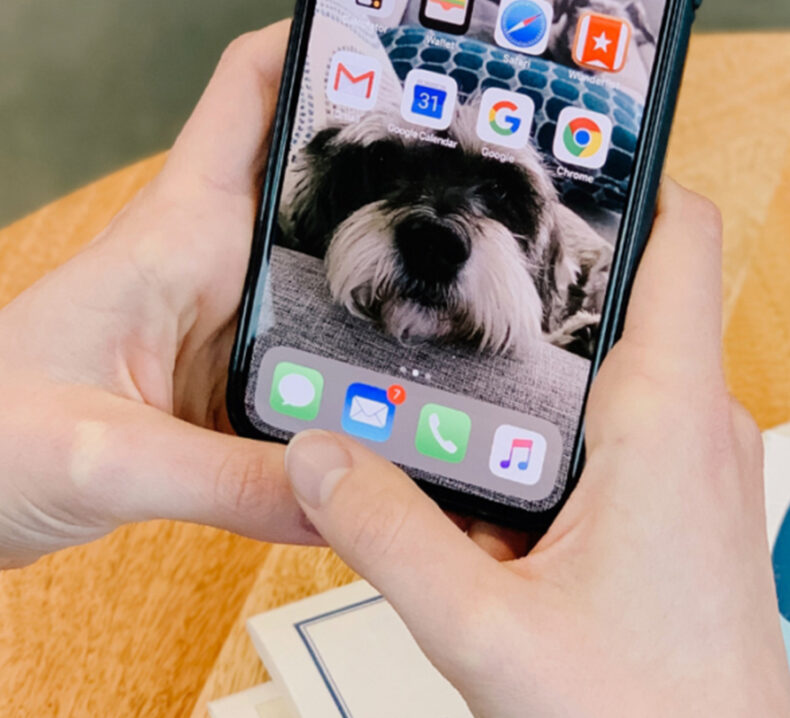Essential Best Practices for Web Design and Content
We’ve talked before on the OBI Creative blog about how to make your website not suck. Here, we dive deeper into website best practices and web design tips worth following. Master these website design tips, and you’ll have a site that looks good and drives leads for your business.
- Keep it simple.
- Remember that content is king.
- Build responsive, accessible websites.
- Prioritize your users.
Website Best Practices That Win Customers Over
1. Keep it simple.
Do a Google search for “web design best practices” and you’ll be overwhelmed with checklists and listicles that suggest everything from eliminating all dropdown menus to building a contact form on every page. (You probably don’t want to do either of those things, for the record.)
Instead of trying to match your unique website to goals and design that may not benefit you, stick to simplicity.
Focus on efficiency
For effective websites, you need smart designs. Streamlined, small payloads — modern formats to lower the amount of data required to load the page. The way your website looks is definitely important, but if it takes too long to load, no one will stick around long enough to appreciate its killer creative. Build a site that looks good without slowing down your page load time.
If visitors can’t find what they’re looking for fast, you’ll lose them. Many people decide whether or not they’re going to stay on a website in less than a second. Consider these startling statistics about website design:
- A single bad experience on a website makes users 88% less likely to visit that site again.
- If they encounter delays, 75% of users will click off the page and head to competitors’ websites.
- Nearly half of users (47%) believe that a website should not take more than two seconds to load.
- Your conversion rate can tank by 7% with a one-second delay. Improving your page load speed by two to eight seconds can send it soaring.
While the look and feel of your website matters, most visitors aren’t evaluating just how slick it is. They want to do or find something specific. Help them by ditching design elements that have no functional purpose.
Use a few strategic colors. Choose up to three readable typefaces and fonts for your content.
Avoid cool “aesthetics” that make your site harder to navigate. Keep your overall UX and website design focused on motivating your visitors to take specific actions.
2. Remember that content is king.
You don’t need to get super clever with your website design.
The most important thing is that you have clear, straightforward navigation that makes sense to everyone using your site.
Consistent website design
This point can be made pretty simply: give your visitors a consistent experience on your website. No matter what page they’re on, visitors should never feel like they’ve left your website. Website best practices dictate that you keep the background, colors, fonts and tone of your writing consistent.
The pages don’t need to be identical, just consistent. A page displaying a rolling list of your blog posts should look a lot different from your homepage. And a page explaining products and services should be laid out differently than the landing page for a specific product campaign.
Create a few consistent page layouts consistent with the overall design of your website and stick to them.
Visual hierarchy in web design
Visual hierarchy is about how each page of your website is laid out — what visitors see, the path their eyes take, and where they expect to click. Your goal is to lead these visitors toward a desired action — but in a way that feels so natural, they don’t even realize the site was intentionally designed that way.
The best website designers deftly arrange the visual hierarchy of content on your website so visitors intuitively move toward the most important features first.
The position, size and color for various elements can work together to draw a visitor’s eye to what you want in a particular order.
Take Spotify’s old homepage below:
What’s the first thing your eye goes to?
It’s probably the green “Get Spotify Free” button, because that’s exactly what Spotify wants you to do.
They use smart, effective copy to quickly and simply explain what Spotify is and why you need it in your life.
To further drive home the point that simple design and thoughtful visual hierarchy matters, see just how good Spotify’s home page looks compared to this online catalog from Norway:
There’s so much going on that it takes attention away from everything — including the products they’d like to sell. This level of distracting imagery breaks just about all the rules of web design.
Which one would you rather look at?
Is it clear what you’re supposed to do?
Again, these two examples show the importance of following web design tips.
Namely, design with your users in mind. Think about what actions you want them to take.
If you aren’t sure what actions you want them to take, go back to your customer personas. Research your customer base and reacquaint yourself with what they need and want. Then make sure you understand how you can meet those needs and wants!
3. Build responsive, accessible websites.
A responsive website delivers the same user experience across devices. So, whether a visitor comes to your site on a desktop computer, tablet or smartphone, the content they see is sized to fit their screen.
This is incredibly important because your business and brand can suffer if your site isn’t responsive. Plus, responsive design helps with SEO rankings and load time.
Website navigation
The photos we just looked at are great examples of the importance of website navigation. Your website should be intuitive, meaning it should make it easy for your visitors to find what they’re looking for — fast.
At OBI Creative, these are some of the website best practices we use to make sure we create websites with intuitive navigation:
- Mobile Menus — We design website navigation with mobile devices in mind. Since most web traffic is done on smartphones, the navigation structure has to work as well for mobile as it does for desktops.
- Wireframing — Before we design even one page’s layout for a client, we create wireframes to nail down the navigation we’ll use consistently across the site. We talk these through with our clients and make sure visitors know where to click next.
- Usability Testing — After the design is complete, but before website launch, we perform thorough usability testing on the sites we create for clients to ensure that the menus and navigation are smooth, easy to understand and pain-free for users.
A few other basics when it comes to good website navigation include:
- Keep your primary navigation structure simple.
- Include primary navigation in your footer.
- Use breadcrumbs on every page so users can see how they got to any page on your site.
- Make sure you include a search box near the top of your website, on every page.
While more can be said about the topic of navigation, put this website best practice into action and you’ll be well on your way to creating more conversions for your company.
4. Prioritize your users.
If you want visitors to your website to convert, they should enjoy the experience.
If you have a reputation as an authority in the field, users might dig through confusing design to get to that information, but they probably won’t. An enhanced, excellent user experience is essential to drive engagement.
At OBI Creative, our mantra is to be brave, so it might sound off-brand for us to promote conventionality in website design. But being conventional when it comes to how your website looks and feels is better for your brand than boldly pioneering design your users won’t understand.
There are particular design conventions that have become so familiar, users expect them when they come to your site. If you abandon these conventions, you risk turning away visitors and potential customers. Some of these conventions include:
- Putting your company logo at the top left or center of a page
- Placing the main navigation at the top (or left) of a page
- Having a clickable logo that always takes visitors back to your homepage
- Making links change color when clicked or hovered over
- Using whitespace and images to break up content on your pages
Using these website best practices as a cornerstone for your web design isn’t boring; it’s being clear and credible!
Why should you follow website best practices?
There are plenty of web design tips and trends you can confidently employ, especially when they support how your users want to engage. These trends arise as people change the way they interact with technology.
For example, when it comes to copy, the new standard is to break up chunks of content into small, bite-sized pieces. This trend flies in the face of academic paper writing, business formats and our expectations for printed books and papers.
The reason for it is straightforward and logical, though. People use tiny little smartphone screens to access the internet, which means they’re engaging with your site and reading your content on a very small surface. A normal-sized paragraph in this format feels like a novel to a visitor and could quickly turn them off.
Designing your website to meet standard conventions doesn’t have to squelch your individuality, creativity or identity. It helps deliver the most satisfying experience for your users, which is what matters most.
Feeling overwhelmed about where to start with your website? Don’t panic! We’re here to help — our talented team of designers and strategists are ready to help you deliver a consistent digital experience that delights your users and benefits your bottom line. Give us a call today!




